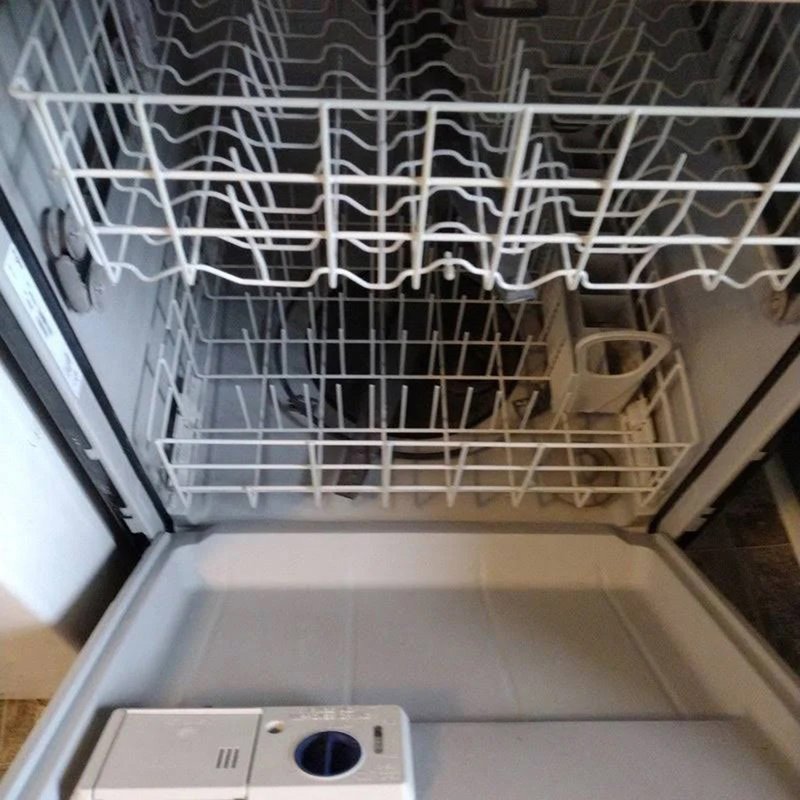
Let’s break down why this happens. Dishwashers are complex machines that, like a symphony orchestra, need all their parts to work in perfect harmony. When one part doesn’t perform right, such as the water not heating correctly, the whole machine can come to a grinding halt. It’s not just about clearing that error code; it’s about making sure your dishwasher runs smoothly every time you need it. So, let’s dive into some practical and easy-to-understand steps to prevent Error Code F1 from disrupting your dishwashing routine in the future.
Understanding Error Code F1: The Basics
Error Code F1 in Whirlpool dishwashers often points to an issue with the water heating circuit. You might picture it like trying to cook a meal without a working stove—it just doesn’t work well. Why does this happen in the first place? It’s usually due to a faulty heating element or a glitch in the control board that manages the heating cycle. Sometimes, it could simply be a miscommunication between the machine’s components, like a game of broken telephone where the message gets lost.
When the heating element fails, your dishwasher can’t reach the necessary temperature to clean dishes effectively. This is not just inconvenient; it can impact your machine’s efficiency and lifespan. A persistently cold dishwasher is like trying to wash dishes in icy water—inefficient and doesn’t get things clean. Knowing this, it’s crucial to keep an eye on the usual suspects like the heating element, control board, and even the thermostat to ensure everything works as it should.
The good news is, just because you see Error Code F1, it doesn’t mean you need to rush out and buy a new dishwasher. With a bit of know-how, you can diagnose and even fix the problem. Moreover, by understanding how your machine works, you’ll be better equipped to prevent future issues. So, let’s explore the preventive measures you can take.
Preventive Maintenance Tips
Preventing Error Code F1 is all about regular maintenance and keeping an eye on the components that matter. Think of it like taking your car in for regular oil changes; a little effort goes a long way. Start by routinely checking the heating element to ensure it’s not burnt out. This piece works like the heating coil in your toaster. If it doesn’t glow, it doesn’t heat. Make sure to gently inspect it for any visible signs of damage.
Next, focus on the control board. This is the brain of your dishwasher, orchestrating the timing and sequence of the wash cycle. Over time, electronic components can wear out or short circuit due to moisture or power surges. Consider protecting your dishwasher with a surge protector to prevent electrical damage. If you’re comfortable, check the connections on the control board for any signs of corrosion or loose wires.
Lastly, don’t overlook the importance of a clean and unclogged filter. A clogged filter can hinder water flow, affecting the machine’s ability to heat water properly. Cleaning the filter regularly can prevent blockages and a subsequent cascade of errors, including F1. It’s like ensuring your coffee maker isn’t plugged with old grounds—keep it clear and flowing.
Steps to Fix Error Code F1
Should Error Code F1 pop up, tackling it head-on is key. Start by resetting your dishwasher. Just like rebooting your computer when it’s acting up, sometimes a simple reset can clear minor errors. Unplug the dishwasher or switch off the circuit breaker for a few minutes. Then power it back up to see if the error clears.
If the reset doesn’t work, it’s time to investigate the heating element. Access the element at the bottom of the washing machine tub. Use a multimeter, if you have one, to test for continuity. No continuity means it’s likely burnt out. Replacing the heating element is often a straightforward task, and a new one will usually get your machine back in full swing.
If both these steps fail, the control board might be the culprit. While DIY replacement is possible, it’s more complicated and might require professional help unless you’re comfortable with electronics. Sometimes, updating the software via a service technician can also remedy persistent errors, ensuring your dishwasher’s brain is as up-to-date as its parts.
To wrap things up, preventing Whirlpool Dishwasher Error Code F1 is all about regular maintenance and a bit of troubleshooting. By understanding how your dishwasher heats water and taking steps to maintain the heating element and control board, you can sidestep many of the issues that lead to this error. Consider it like keeping a musical instrument fine-tuned—when every part works as it should, the performance is flawless.
Remember, small steps like checking the heating element, using a surge protector for the control board, and cleaning the filter regularly can make a big difference. If the error does show up, don’t panic. Try the reset, inspect the components, and seek professional help if needed. With these tips in mind, you’re well on your way to ensuring your Whirlpool dishwasher remains a reliable kitchen companion rather than a source of frustration.